Mobile Raised Bed
Step-by-step instructions for building a mobile raised bed for FarmBot Genesis
- Determining bed size
- Step 1: Acquire materials
- Step 2: Lay out the floor panels and legs
- Step 3: Mark where the legs will go
- Step 4: Cut and attach the floor supports
- Step 5: Attach the short walls
- Step 6: Attach the long walls
- Step 7: Attach the legs
- Step 8: Attach the casters
- Step 9: Attach the middle floor panel
- Step 10: Attach the cable carrier supports
- Step 11: Apply the sealer or stain
- Step 12: Add the bed liner
- Step 13: Fill the bed
- What’s next?
Building a mobile raised bed is the recommended method for installing FarmBot Genesis indoors. In these instructions we show you how to build a simple but sturdy bed that can be easily moved around a classroom, lab, warehouse, or museum space.

Not suitable for Genesis XL
We do not recommend building a mobile raised bed for Genesis XL devices because it would be extremely heavy and difficult to move.
6 hours
This is the estimated time it will take to build a mobile raised bed.
Determining bed size
We recommend building your mobile raised bed as large as possible to get the most value out of your FarmBot, while making sure you do not exceed the maximum size limit. This will ensure you get the most value out of your FarmBot without making the bed unnecessarily large, which can be more difficult to move around and add cost.
Consider your space
In determining how large your bed can be, consider if you will ever need to move the bed from room to room, down any hallways, around any corners, and/or through any doorways. Your bed should be able to fit nicely in all the places you want to place it and be moveable between those places.
The reference design shown on this documentation page is for a maximally sized mobile raised bed for the stock Genesis kit. The outer dimensions of the bed (where the tracks will be mounted) will be 1.36m wide by 3m in length, with the cable carrier support adding an additional 0.04m to the total width. The height from the floor to the top of the bed will be approximately 0.7m.
If you are designing a bed for a smaller installation, you will need to modify the dimensions of the lumber as needed.
View the CAD model
The CAD model of this supporting infrastructure is open-source . You are free to view, copy, and modify the design as needed.
Step 1: Acquire materials
| Qty | Component | $/Unit | Subtotal |
|---|---|---|---|
| 2 | Side floor panels (1280mm x 1220mm x 20mm) | $30.00 | $60 |
| 1 | Middle floor panel (1280mm x 700mm x 20mm) | $20.00 | $20 |
| 2 | Long walls (40mm x 300mm x 3000mm) | $15.00 | $30 |
| 2 | Short walls (40mm x 300mm x 1280mm) | $7.50 | $15 |
| 4 | Long floor supports (40mm x 40mm x 1130mm) | $3.00 | $12 |
| 2 | Short floor supports (40mm x 40mm x 1100mm) | $2.00 | $4 |
| 4 | Legs (90mm x 90mm x 450mm) | $3.00 | $12 |
| 2 | Cable carrier supports (40mm x 40mm x 1500mm) | $3.00 | $6 |
| 4 | Heavy duty locking swivel casters | $10.00 | $40 |
| 1 | Box of 30mm wood screws | $8.00 | $8 |
| 1 | Box of 50mm wood screws | $8.00 | $8 |
| 1 | Box of 75mm wood screws | $8.00 | $8 |
| 8 | M10 x 150mm bolts | $0.75 | $6 |
| 8 | M10 nuts | $0.25 | $2 |
| 16 | Large M10 washers | $0.25 | $4 |
| 1 | Sealer, stain, or polyurethane | $20.00 | $20 |
| 1 | 2m x 4m tarp | $15.00 | $15 |
| TOTAL | $270 |
Step 2: Lay out the floor panels and legs
Lay the two side floor panels on the floor to form the outer shape of the bed. There should be about a 0.5m gap between them. The 1280mm edges should be on the short sides of the bed outline.
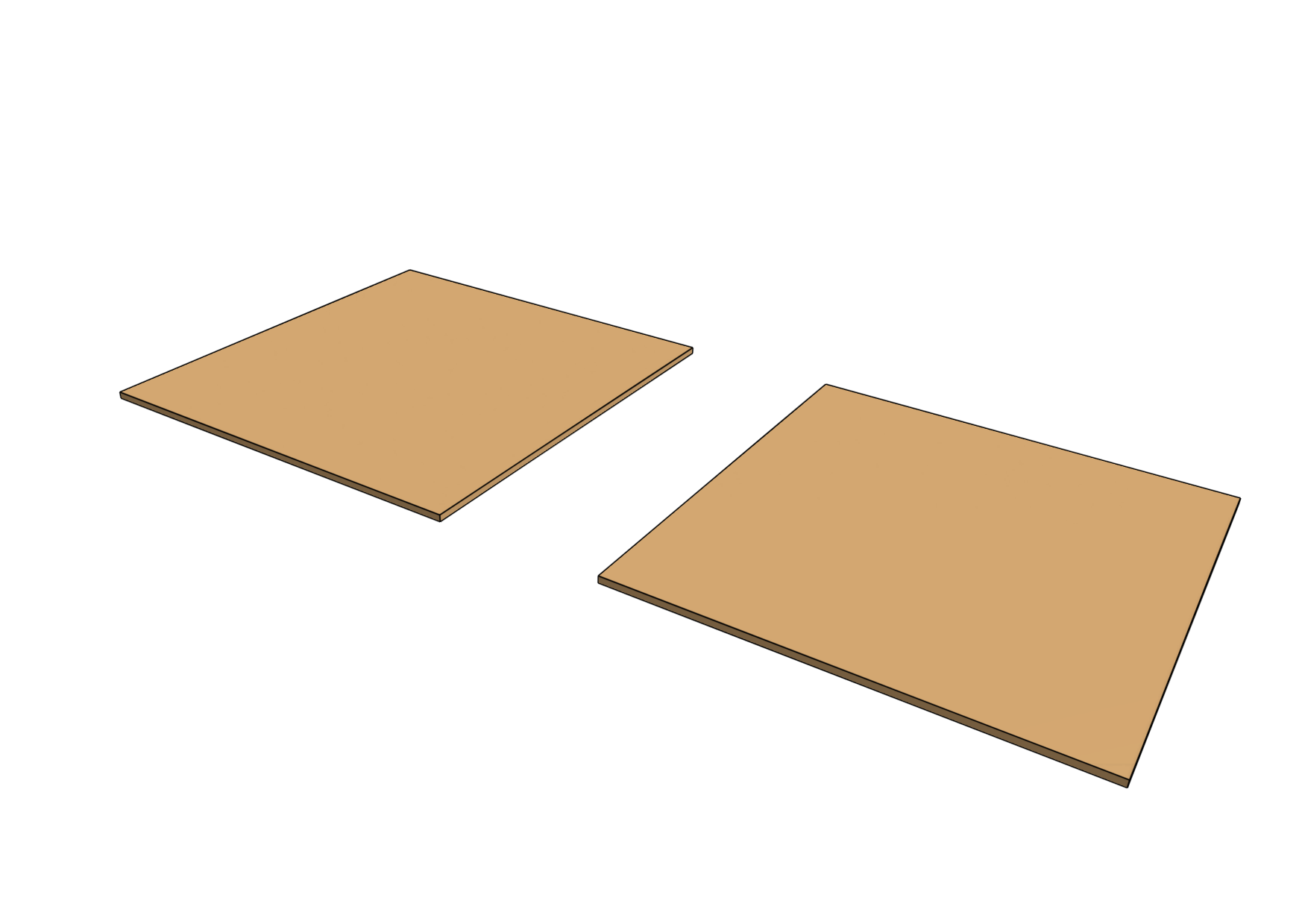
Step 3: Mark where the legs will go
Stand the four legs up on the four corners of the floor panels. Using a pencil, mark where the inner edges of the legs meet the floor panels. Then remove the legs.
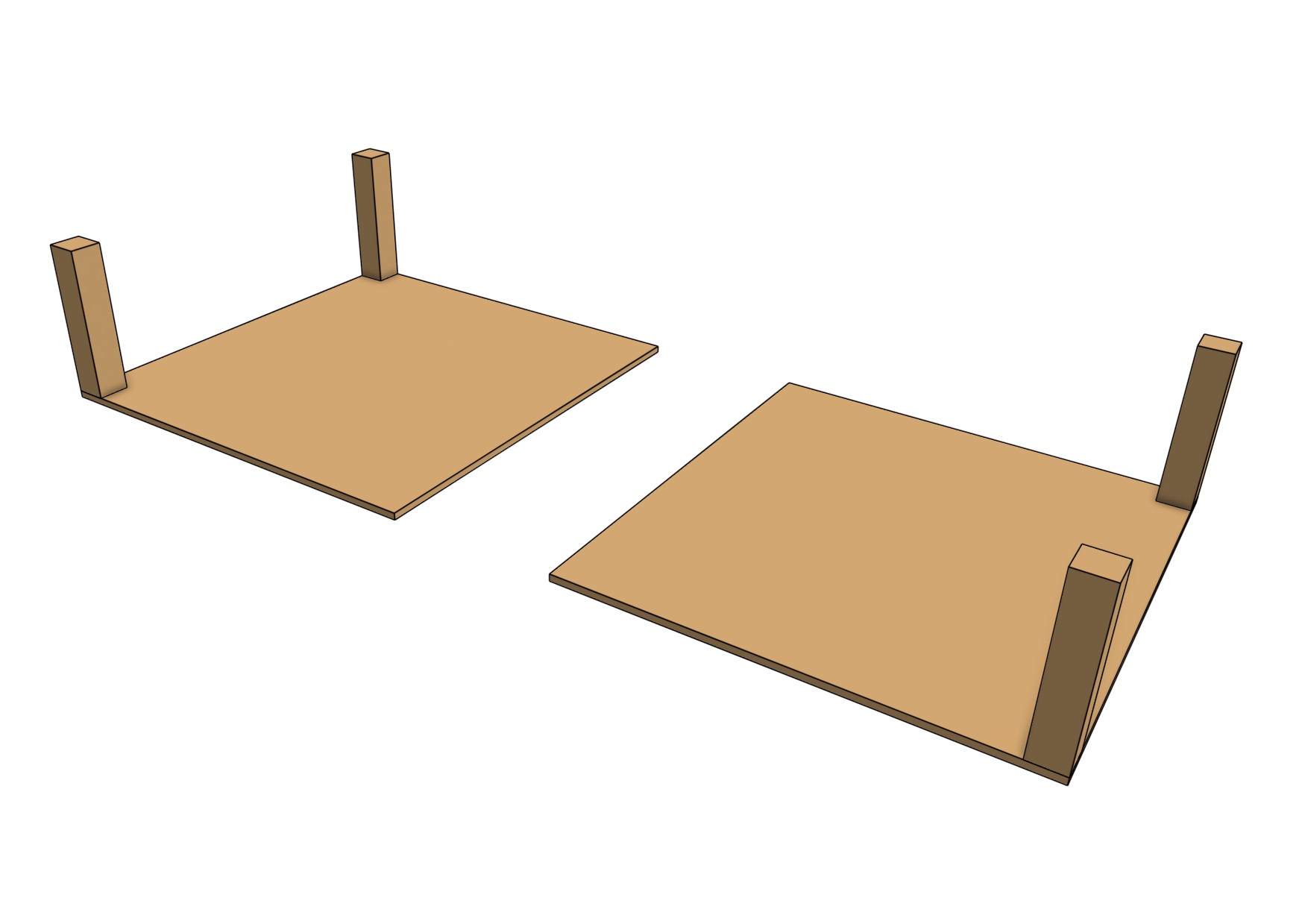
Step 4: Cut and attach the floor supports
If not already cut to length, cut the floor supports such that they will fit on the floor panels as shown, ensuring that they do not intrude on the space needed for the legs as marked in the previous step.
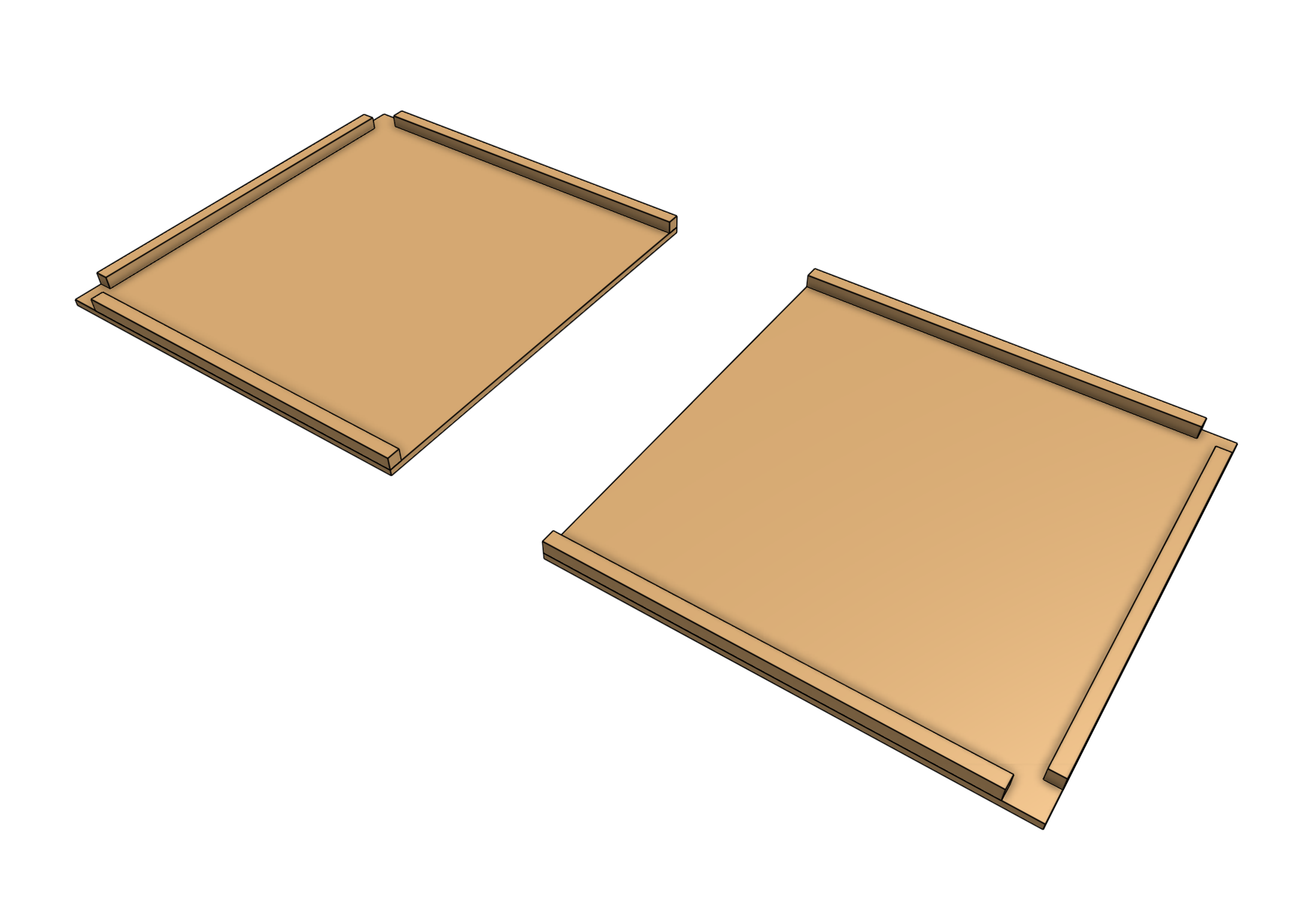
Flip everything over and attach the supports to the panels using 50mm screws spaced roughly every 150mm.

Step 5: Attach the short walls
Temporarily raise one floor panel subassembly off of the floor by 90mm by positioning legs underneath the floor supports.

Attach a short wall to the short floor support using 75mm screws spaced roughly every 150mm. Ensure you offset the screws from those used in the previous step to ensure there are no collisions. You may want to pre-drill through the short wall.

Repeat for the second panel and second short wall.
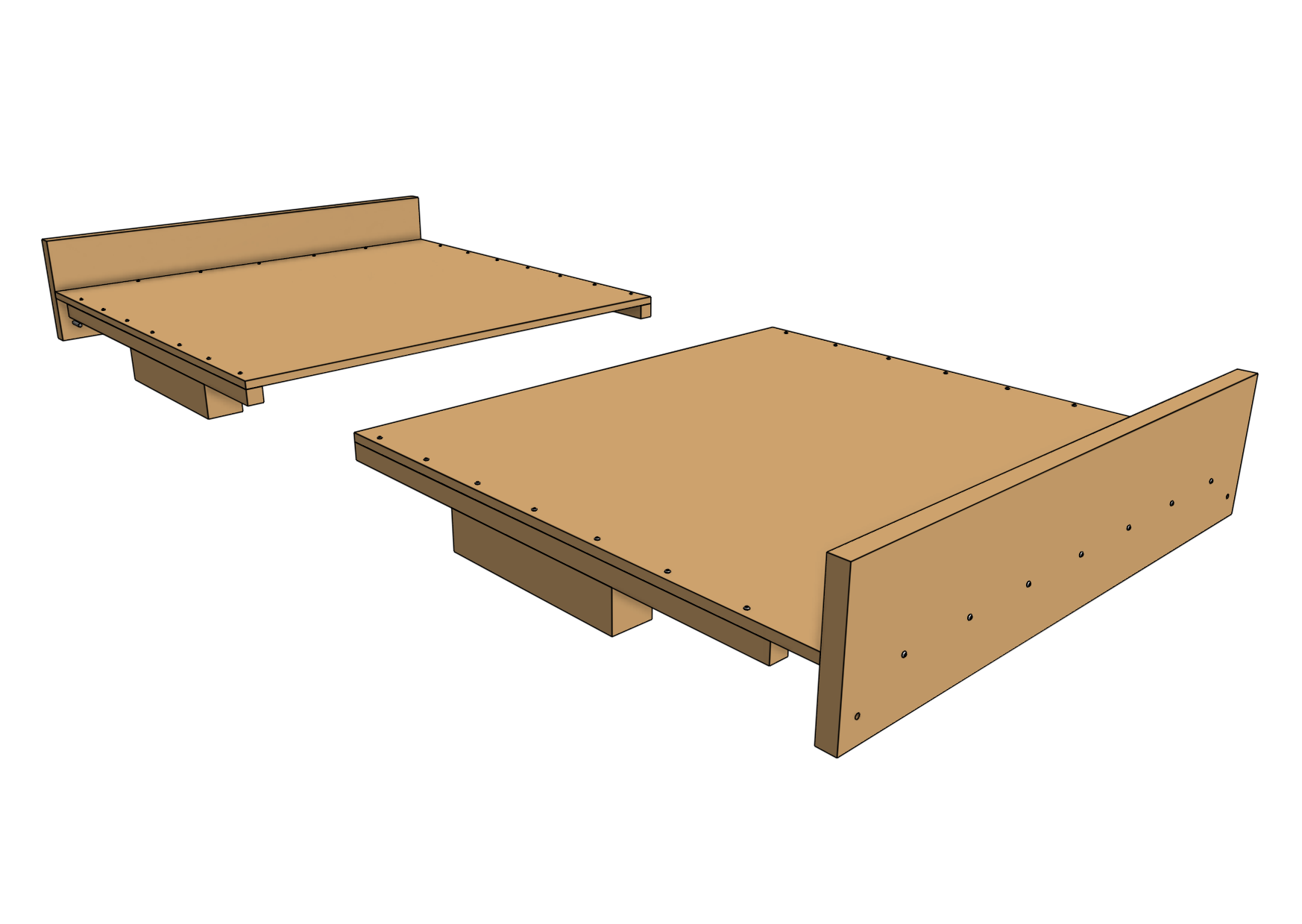
Step 6: Attach the long walls
Position one of the long walls such that its end faces are flush with the outer faces of the short walls. Then attach it to the long floor supports using 75mm screws spaced roughly every 150mm. Ensure you offset the screws from those used in the previous steps to ensure there are no collisions. You may want to pre-drill through the long wall.
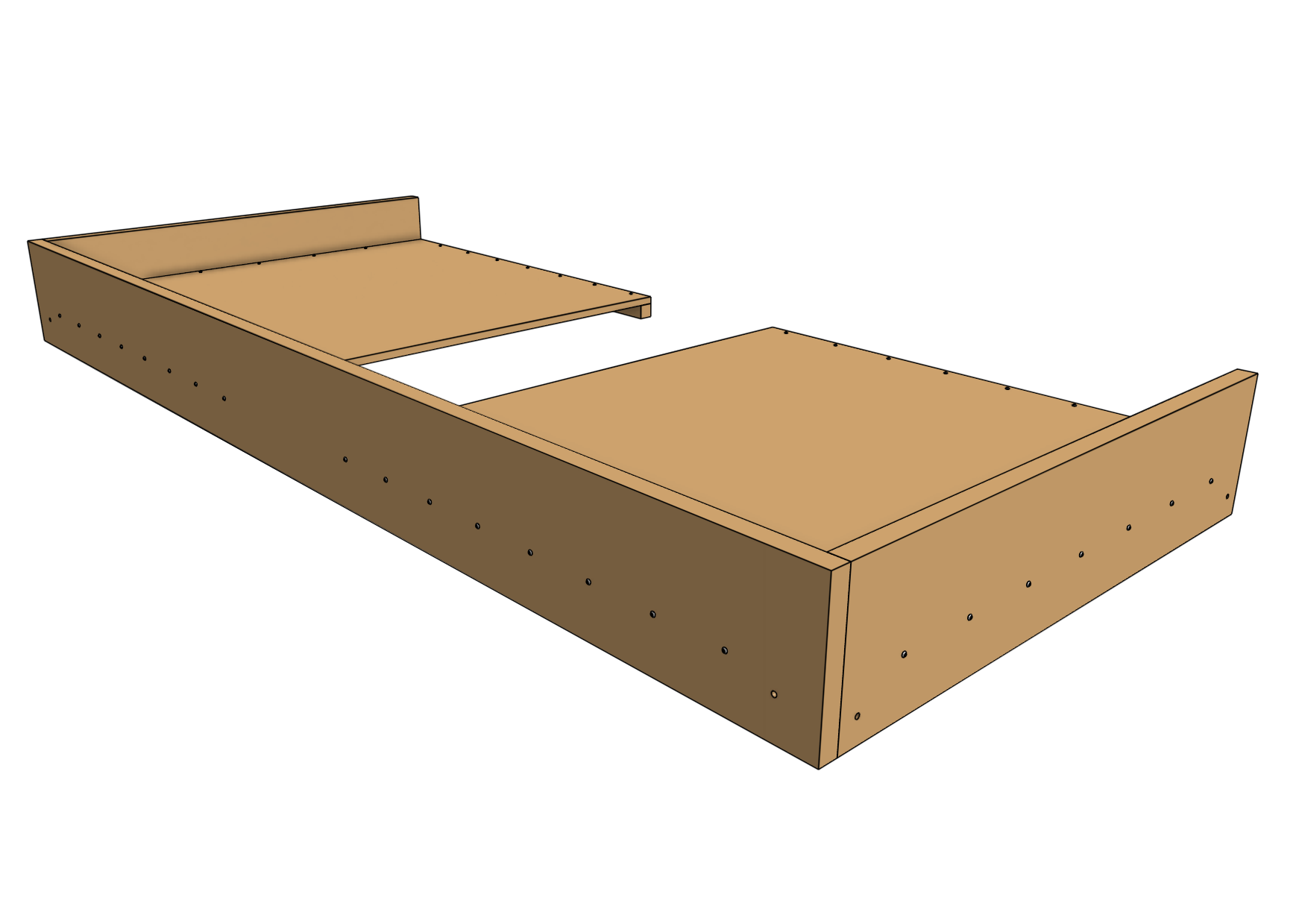
Repeat for the second long wall.
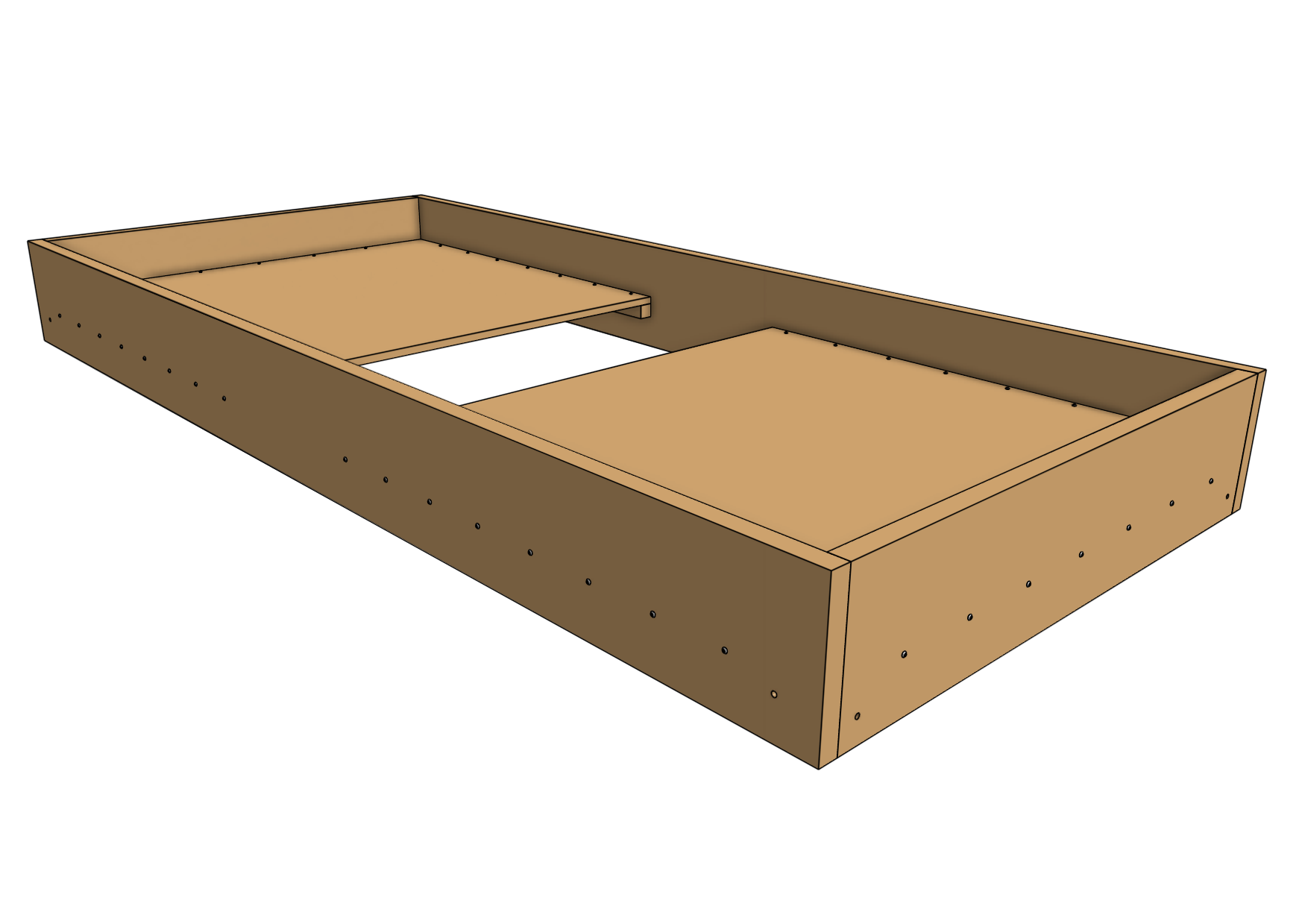
Step 7: Attach the legs
Using the help of another person (or two), carefully flip the raised bed upside down.
Don't trip!
Remember: the legs are underneath the bed because you temporarily used them to offset the panels from the floor. Make sure not to trip on them when flipping the bed.
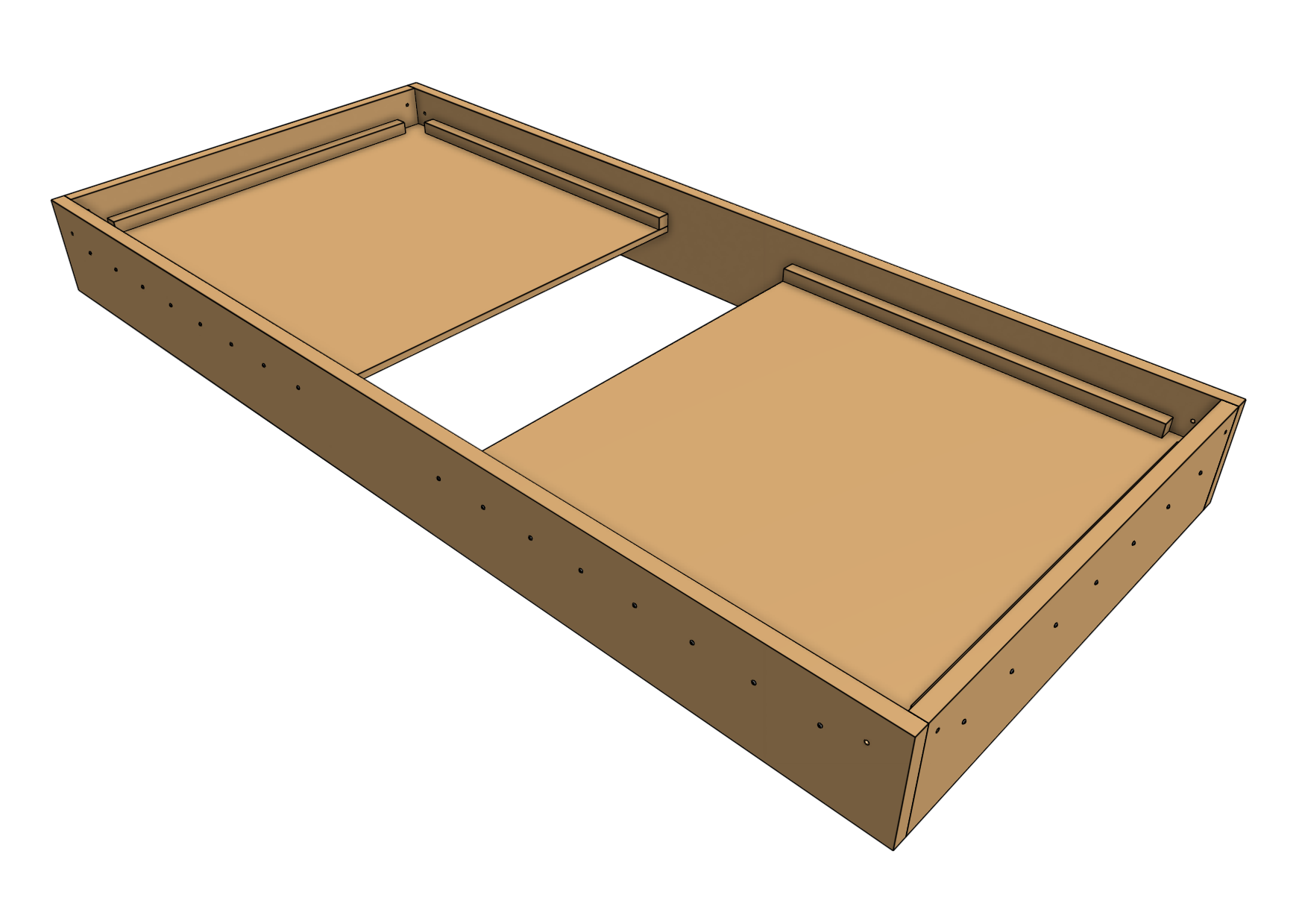
Position one of the legs in the corner of the bed.
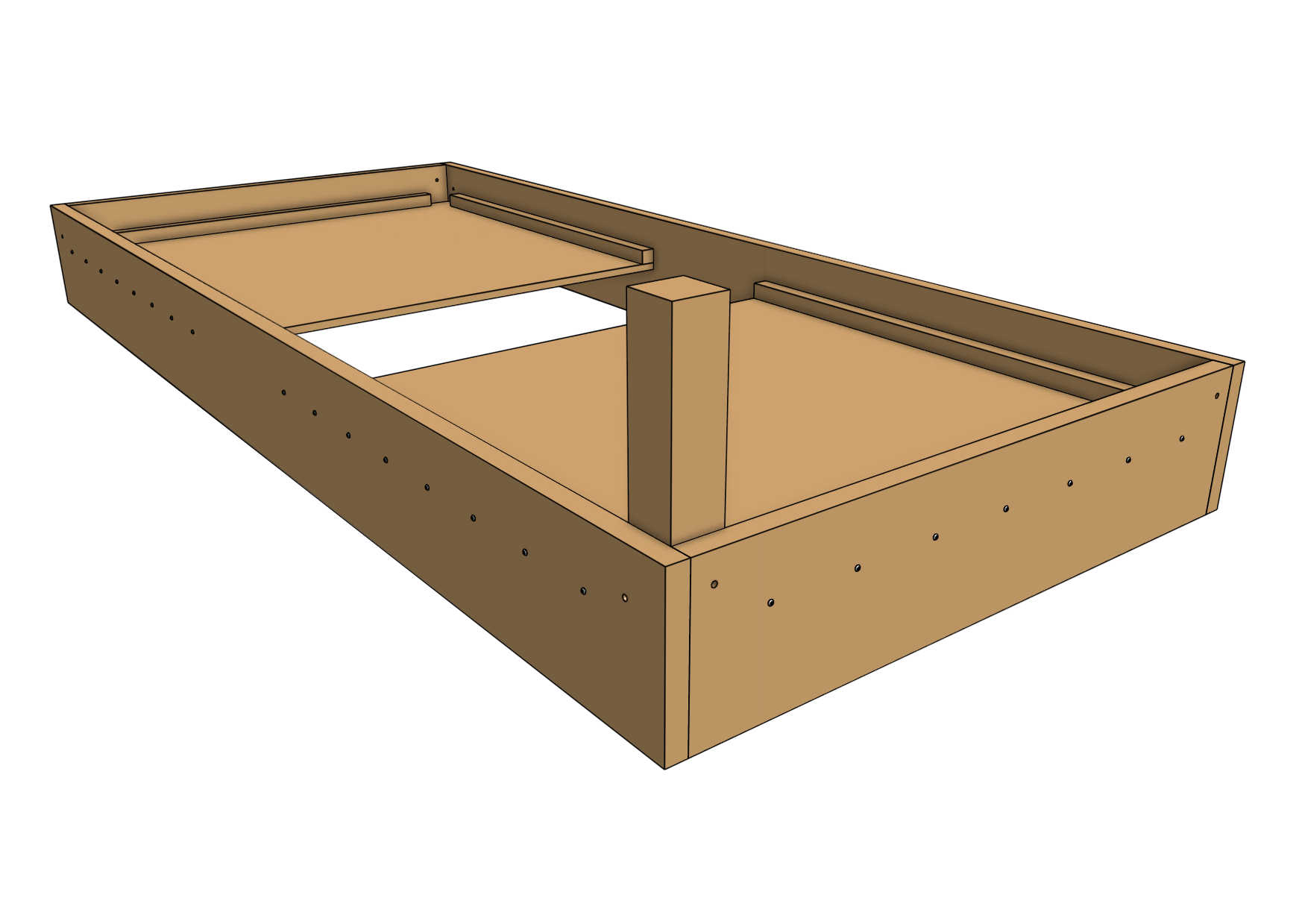
Mark and pre-drill one hole for an M10 bolt all the way through the long wall and leg. Then mark and pre-drill a second hole all the way through the short wall and leg. You may want to clamp the leg in place for pre-drilling.
Don't let the bolts hit each other
Make sure to stagger the holes slightly so that the bolt coming in from one side of the bed does not hit the bolt coming in from the other side.
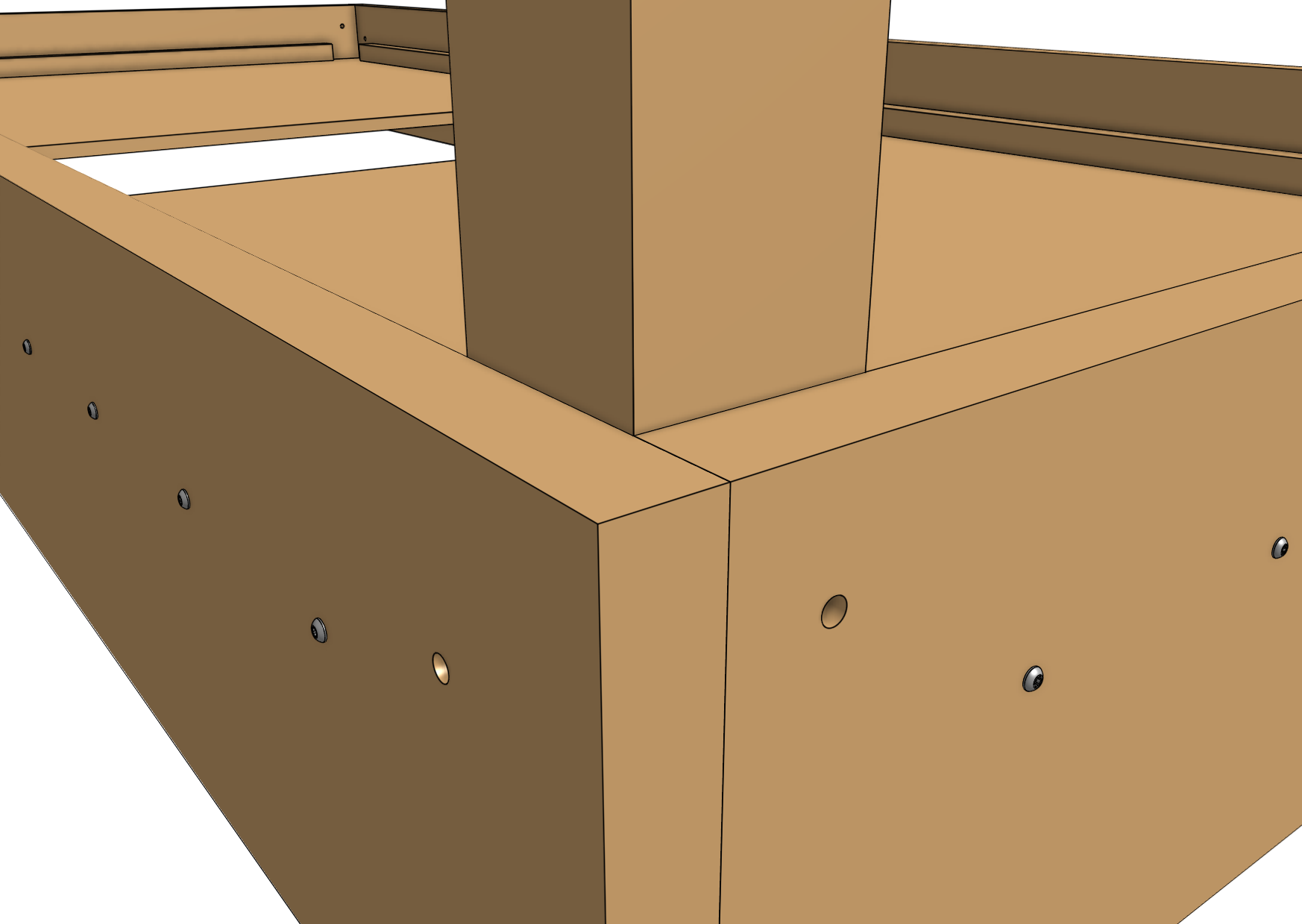
Attach the leg to the bed using two M10 x 150mm bolts, four large M10 washers, and two M10 nuts. One washer should be placed between each bolt head and the wood and between each nut and the wood.

Repeat for the remaining three legs.

Step 8: Attach the casters
Using four 75mm screws, attach a caster to the bottom of a leg.

Repeat for the remaining three casters.

Step 9: Attach the middle floor panel
With the help of an extra person, flip the raised bed over onto its wheels. You may want to lock the casters before flipping the bed over, to prevent it from rolling.
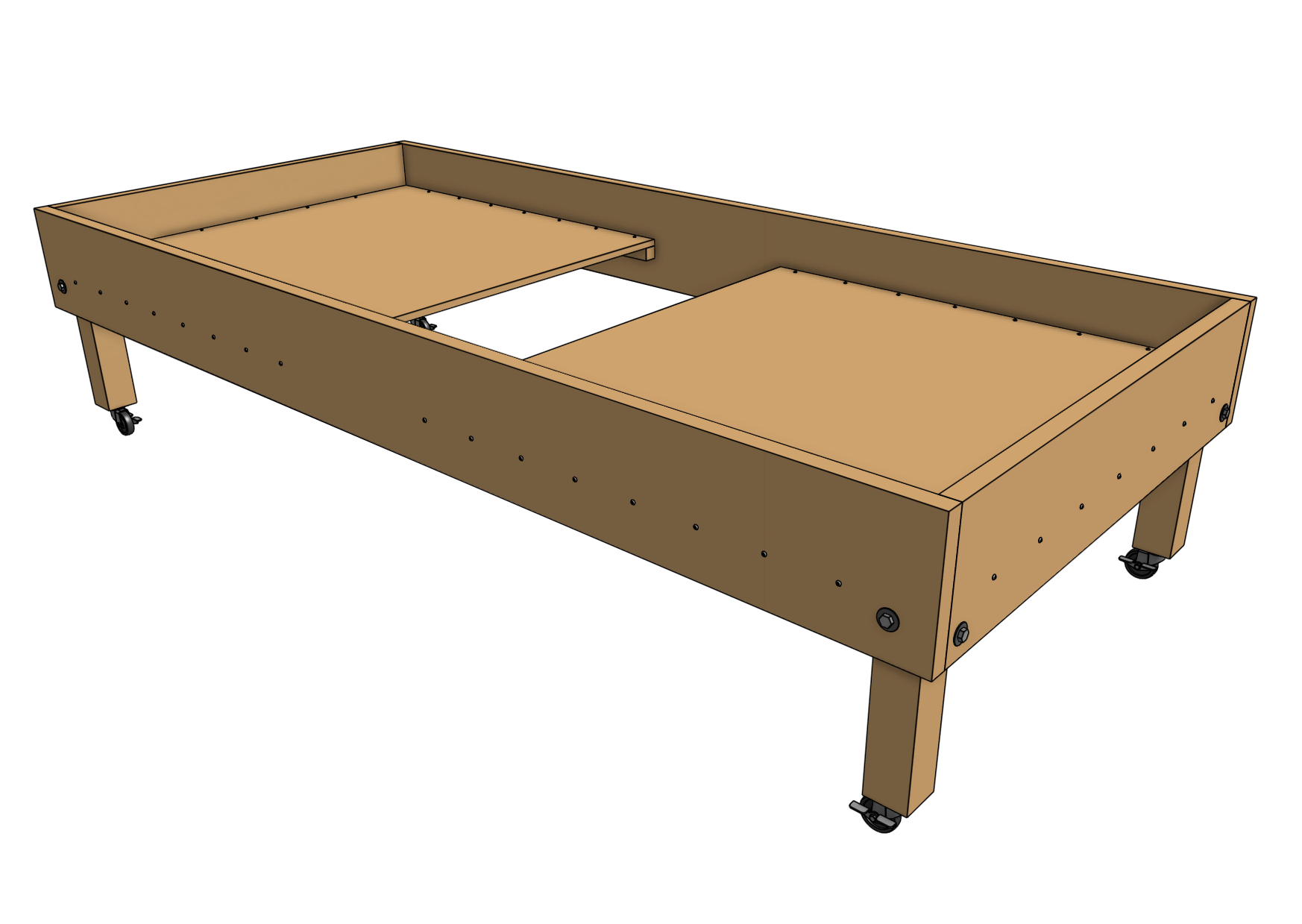
Position the middle floor panel over the gap in the middle of the bed, and attach it to the side floor panels using 30mm screws spaced roughly every 150mm.

Step 10: Attach the cable carrier supports
Attach the upper cable carrier support to the long wall using T25 x 75mm wood screws or equivalent. The cable carrier support should be positioned on the long wall where you plan to have your FarmBot’s electronics box (the left long wall when looking at the front of the FarmBot). The top of the support should be positioned 60mm from the top of the bed.

Attach the lower cable carrier support to the long wall using T25 x 75mm wood screws or equivalent. The top surface should be positioned 20mm or more below the bottom surface of the first support.

Step 11: Apply the sealer or stain
Consider using an orbital sander to smooth out any rough edges and corners, and remove any markings on the wood. Then follow the instructions on the the can of the stain or sealer you purchased to give your bed a finished look. While this step is optional, it can go a long way towards improving the aesthetics of your FarmBot installation.
Step 12: Add the bed liner
Unfold the tarp and lay it in the bed such that it wraps up the side walls. You can cut off the extra tarp material or simply fold it back into the bed. Some cuts may need to be made to facilitate tidy folding. Optionally, you may use a staple gun to secure the tarp in place, though the soil will also hold it in place just fine.
Step 13: Fill the bed
Fill the bed with a mix of soil and compost, and keep out large rocks and branches. We recommend purchasing potting soil from your local nursery.
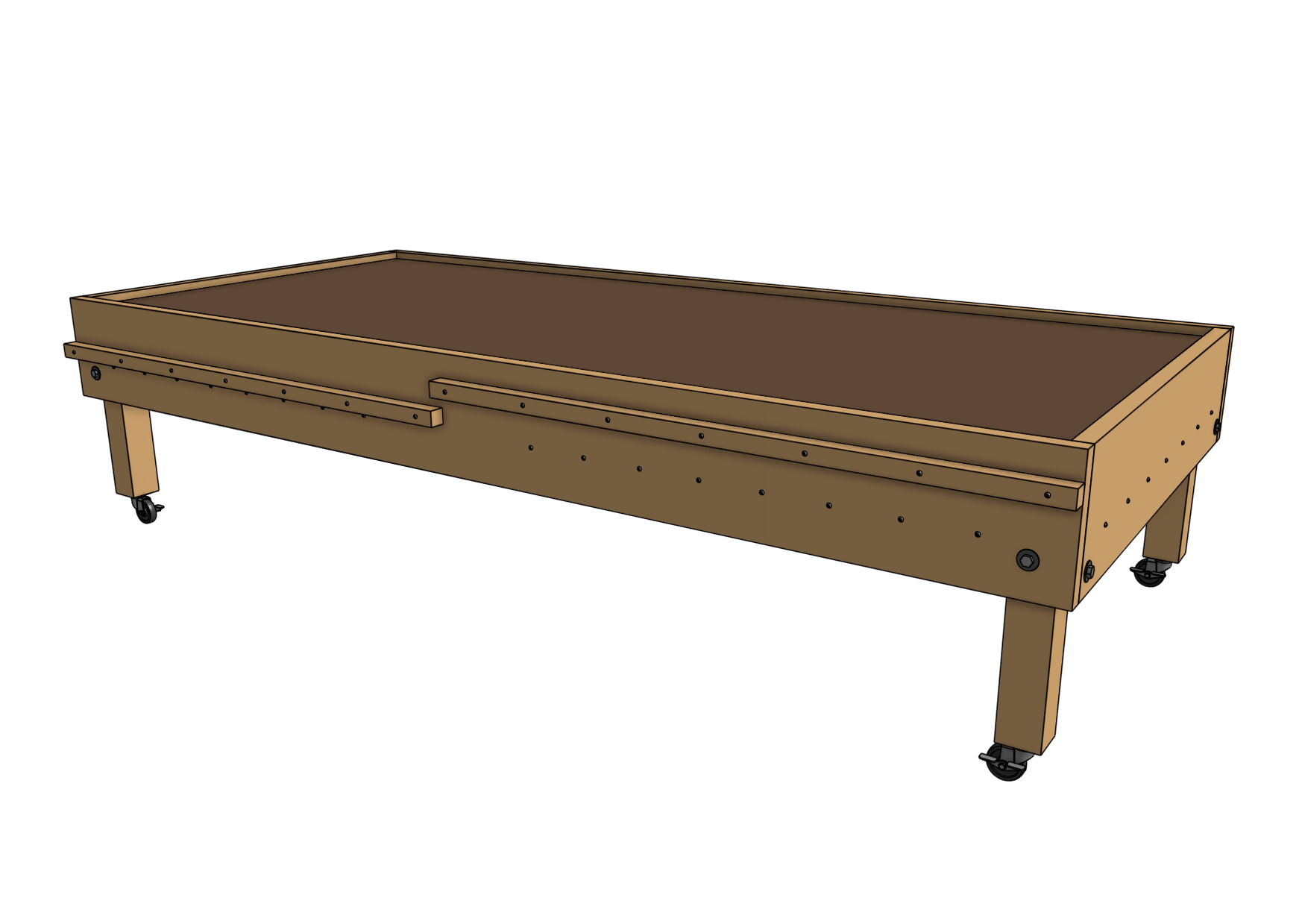
Congrats!
Your mobile raised bed is now ready for your FarmBot installation.